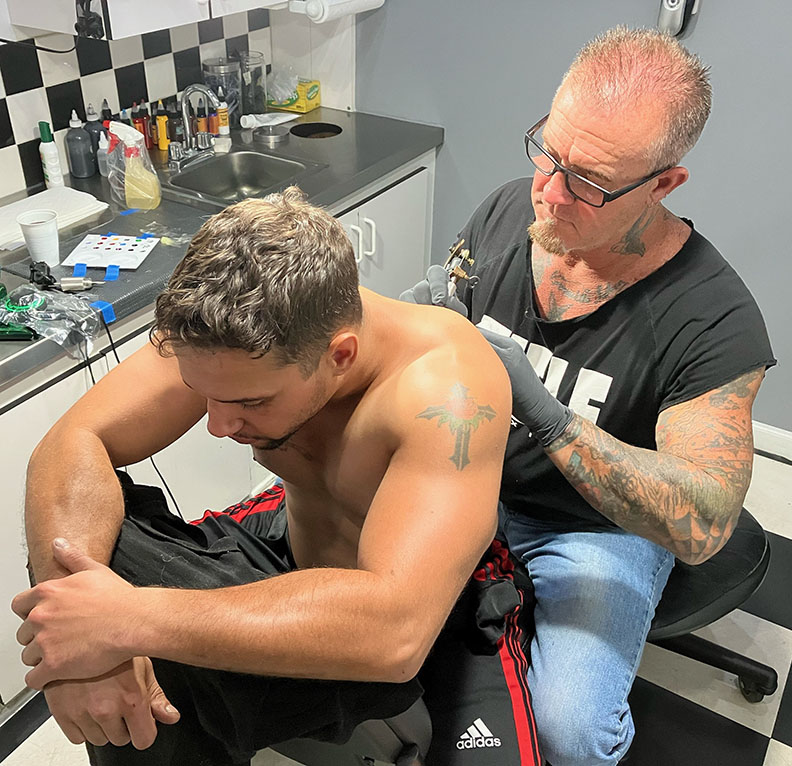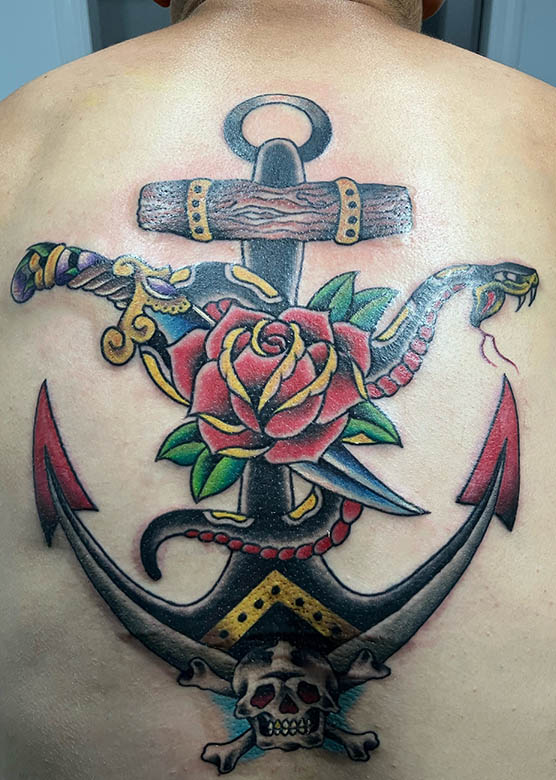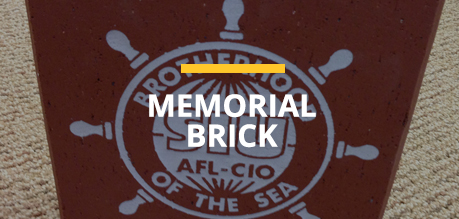Longtime Seafarer Scott Musick may have inadvertently discovered an ultimate test of friendship.
While becoming a self-taught tattoo artist 30 years ago, he practiced on various inanimate objects – and also gave free tattoos to several friends.
“I’m happy to say they’re all still my friends today,” says Musick, who works as a refrigeration mechanic for Crowley at Penn Terminal in Chester, Pennsylvania.

Though hardly an old-timer at age 56, Musick has a tattooing background that is becoming far less common as the industry burgeons into a billion- dollar, mainstream enterprise. Today, it’s easy to locate licensed body-art schools, and official apprenticeships are available. Published reports indicate that more than 145 million Americans have tattoos, including more than half of all U.S. citizens younger than 40. Costs of tattoos widely vary; they’re typically somewhere in the low hundreds of dollars, but can reach well into the thousands.
“When you go back to, say, the 1950s, someone who had tattoos was kind of a rebel,” Musick says. “It seemed like in the 1990s, it became a little more socially accepted. A lot of the skateboard kids were getting into tattoos, and TV shows like Ink Masters brought it into everyday life. People saw that tattoos could be something beautiful, and weren’t just for military members and motorcycle riders.”
Nevertheless, learning the trade wasn’t straightforward or quick for Musick.
“When I got into it, there weren’t a lot of shops around,” he recalls. “Back in the day, you really had to prove your worth. The old-timers weren’t giving up any tricks of the trade, so you had to hope one of them would take you under their wing. Working as a mechanic was sort of the same thing. Eventually, if the old-timers felt you were really interested, they’d show you.”
As his interest in tattooing grew, Musick “said to myself, this can’t be that hard. There was one company you could buy equipment from. I bought it and basically taught myself” during a span of several years.
Decades later, after applying more tattoos than he can count, Musick still appreciates the ongoing experience as an avocation. He’s a part-timer in a regional chain (Body Graphics) where he has worked for the last 22 years. Previously, he’d run a business from his home.
“My union job obviously comes first, and accounts for my benefits and (eventual) pension,” Musick says. “My tattoo job is fun money and just enjoying the art.”
‘Team Player’
Those familiar with Musick’s work – as a Seafarer and as an artist – say plenty of good things about both areas.
Musick graduated from high school in 1985 and immediately followed in the footsteps of his father, Jim, also a longtime SIU member (who passed away in 2018).
SIU Secretary-Treasurer David Heindel, then working as the union’s port agent in Philadelphia, met Scott when he signed on at Crowley’s terminal in Pennsauken, New Jersey.
“Scott has always been a team player and a hard worker,” Heindel notes. “I eventually became familiar with Scott’s artwork through his Facebook postings. His art is nothing short of extraordinary and unique. I’ve used his talents several times to create T-shirts for [motorcycle] charity runs, and he’s never disappointed.”
Musick also created the art for shirts that were highlighted at an El Faro memorial dedication in 2016 at the hiring hall in Jacksonville, Florida.

“Knowing how good Scott’s work is, I wanted to use his talents to create something for that ceremony,” Heindel recalls. “His ability to capture the essence of the moment and use it to remember our brother and sister Seafarers in a memorial T-shirt for those attending, was nothing short of brilliant.”
Retired Seafarer Mike Fay worked with both Jim and Scott Musick for many years.
“Scott and I shared the same passion for motorcycles and did a lot of rides together,” Fay says. “As far as being a co-worker, I wish we had more like him. He’s very skilled, and always rolled up his sleeves and tackled assignments while staying clear of the nonsense.
“I remember when he decided to learn tattooing and would practice on raw turkeys,” Fay continues. “Scott’s tattoos speak for themselves. I have quite a few from him myself.”
Early Start
Tattoos grabbed Musick’s attention from early childhood. His father had several tattoos; Musick regularly drew copies and other images.
Musick got his first ink at age 14, at a now-defunct shop in Camden, New Jersey.
“My dad took me and lied about my age,” Musick recalls. “I just got a name on my arm, but from that day on, it was pretty much off to the races. I stopped counting my own tattoos when I got to 30 of them.”
Nowadays, Musick is pleased by the industry’s growth, though he is puzzled by some of the seemingly random images that people select.
“A tattoo is supposed to be something personal that tells a story about your life,” he says. “The ones that I really get the most joy from (applying) is when someone comes in for a memorial tattoo for someone who’s passed away. When I get done and they look in the mirror and tears of joy come to their eyes, I know I’ve done my job.”
Fortunately, those are usually the only types of tears he sees as an artist. Asked in general how much it hurts to receive a tattoo, Musick replies, “I won’t say it’s painless, but nine times out of 10, people say it’s not bad at all. If someone doesn’t know what to expect, I’ll dip my needle into some water (for a trial run). The outline seems to be a little more painful, only because of the configuration of the needles” (more than a half-dozen different ones typically are used on a tattoo).
Musick can finish a basic tattoo (such as a name) in a few minutes, whereas, for complex designs such as full sleeves, “I’ll work until they tap out. Most people last four or five hours.”
He plans to stick with both of his professions for the foreseeable future, and says he remains grateful for his circumstances: “I’m very blessed to be a member of the SIU and to have a job with Crowley.”
###





Comments are closed.